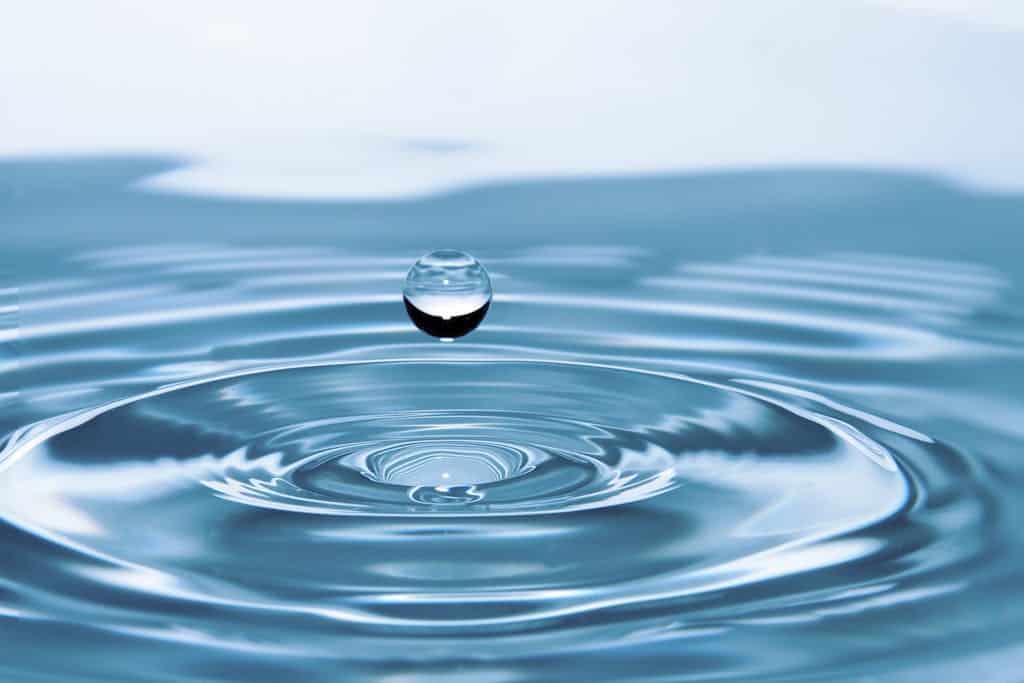We’re reader-supported. When you buy through links on our site, we may earn an affiliate commission.
Freeze drying is a marvel of food preservation technology, adeptly removing moisture from food to extend its shelf life while maintaining its nutritional value and flavor. This method is becoming increasingly popular in individual homes, thanks to at-home freeze dryers like Harvest Right, which allow families to conveniently preserve a wide range of foods right in their own kitchens.
Yet, the rehydration process is equally crucial, transforming these crisp, preserved items back into their palatable, original state. Central to this transformative process is the water used for rehydration, with its type playing a pivotal role in determining the quality, taste, and safety of the rehydrated food. This blog post delves into the different types of water – filtered, distilled, spring, and tap water – examining how each impacts the rehydration of freeze dried foods.
The Importance of Water Quality in Rehydration of Freeze Dried Food
The rehydration process is not merely about introducing moisture back into freeze dried foods; it’s restoring the food’s original state. The quality of water used is paramount, as it directly impacts the taste, texture, and overall enjoyment of the rehydrated food. Water impurities or additives can compete with the food’s inherent flavors, while the purity of distilled or filtered water can preserve and respect the original tastes.
Given the importance of this process, let’s explore the best types of water to use for rehydration and an alternative if the top choice isn’t available.
Distilled Water: The Purity Champion
Distilled water is water purified through distillation, a process involving boiling water and then condensing the steam back into a liquid. This method effectively removes minerals, contaminants, bacteria, viruses, and chemicals, resulting in water that is nearly pure H₂O. Distilled water is devoid of minerals, impurities, and pollutants. Its unmatched purity makes it an ideal candidate for rehydrating freeze dried foods when the goal is to assess or ensure the original taste and quality of the food without external influence. While not necessary for all applications, distilled water is particularly beneficial for culinary uses where precision and flavor clarity are paramount.
How Water is Distilled
The basic principle behind distillation is simple yet effective:
- Boiling: Water is heated until it boils and turns into steam. This phase change leaves most impurities behind, including minerals, heavy metals, and non-volatile compounds.
- Condensation: The steam is then cooled in a separate chamber or through a condenser coil, where it condenses back into liquid water. Since most contaminants do not evaporate with the water, they are not present in the condensed water.
- Collection: The distilled water is collected in a clean container, separate from the original boiling chamber. The result is water that is exceptionally pure.
Different Ways to Distill Water
Though the basic steps of distillation are consistent, several methods and apparatuses can be used, ranging from simple DIY setups to sophisticated commercial distillers:
- Traditional Distillation Units: These are the most common distillation systems, often found in laboratories. They consist of a heating element, a boiling chamber, a condenser, and a collection vessel. Commercial home water distillers work on this principle but are designed for ease of use and safety.
- Solar Distillation: Utilizing solar energy, this method involves placing water in a solar still—a device that uses the sun’s heat to evaporate water, which then condenses on a cool surface and drips into a collection container. Solar distillation is eco-friendly and cost-effective but depends on weather conditions and has a lower production rate.
- DIY Stovetop Distillation: A simple home distillation setup can be created with a large pot of water, a bowl (that floats), and a lid. The pot is boiled, and the lid is inverted to allow condensation to drip into the bowl. Ice on top of the lid can enhance condensation. This method is suitable for small quantities.
Distilling Water at Home

For those interested in distilling water at home, purchasing a home water distiller is the most straightforward option. These appliances are designed for safety and efficiency, automating the distillation process and providing consistent results. DIY methods, such as stovetop distillation, can be effective for small-scale or occasional needs, though care must be taken to ensure the process is done safely and that the distilled water is stored correctly to avoid contamination.
Distilled Water to Rehydrate Freeze Dried Food- The Best Choice
With its high purity, distilled water plays a crucial role in various applications, from scientific research to culinary arts, including the preparation and enjoyment of freeze dried foods. Whether through a purchased home distillation unit or a DIY approach, distilling water at home can provide you with the purest form of water, free from impurities and contaminants, making it ideal for applications requiring high purity, such as medical uses, laboratory work, and enhancing the rehydration of freeze dried foods.
Distilled water stands out as the optimal choice for rehydrating freeze-dried food for several reasons:
- Purity: Distillation removes virtually all impurities, minerals, and contaminants. This level of purity means that no external flavors or substances interfere with the rehydrated food’s taste and quality.
- Consistency: Using distilled water provides a consistent baseline for rehydration, allowing the freeze dried food’s original flavors to shine through without the variability that can come with tap or even filtered water.
- Safety: The distillation process ensures that the water is free from pathogens and harmful chemicals, making it a safe option for rehydrating food. This is particularly important when consuming rehydrated food without further cooking.
Filtered Water: The All-Rounder
Filtered water is tap or well water purified to remove chlorine, sediment, and various contaminants, including bacteria, viruses, heavy metals, and chemicals. The extent of filtration can vary based on the method used, targeting different impurities to achieve water that’s safe and pleasant to taste.
Methods of Water Filtration
Several filtration techniques are employed to purify water, each with its strengths and applications:
- Activated Carbon Filters: These are among the most common household water filters, using activated carbon granules based on charcoal to absorb impurities and remove taste and odor from water, such as chlorine. They’re effective for organic compounds and can improve water taste significantly.
- Reverse Osmosis (RO): RO systems push water through a semipermeable membrane, removing a broad spectrum of contaminants, including dissolved salts, bacteria, and chemicals. This method is highly effective but requires more complex installation and maintenance.
- Ion Exchange: This filtration method softens water by replacing undesirable ions, like magnesium and calcium, with sodium or potassium ions. It’s particularly useful in areas with hard water, improving taste and preventing scale buildup.
- Ultraviolet (UV) Filtration: UV filters use ultraviolet light to disinfect water, killing bacteria, viruses, and other pathogens. This method is environmentally friendly and doesn’t add chemicals to the water.
- Mechanical Filters: These filters remove physical particles from water through a fine sieve or membrane. They’re often used as a preliminary step in a multi-stage filtration system.
Filtering Water at Home
Implementing water filtration at home can range from simple, cost-effective solutions to more advanced systems, depending on your needs and the quality of your tap water:
- Pitcher Filters: These are a straightforward and economical option. Water is poured into a pitcher fitted with a carbon filter, gradually filtering through to a clean reservoir. They’re easy to use and maintain, making them popular for improving the taste of drinking water.
- Faucet-Mounted Filters: These devices attach directly to your tap, offering convenient filtered water straight from the faucet. They typically use carbon filters to remove contaminants and improve taste.
- Under-Sink Filters: Installed under the kitchen sink, these systems can employ multiple filtration methods, including RO and carbon filtration, to provide high-quality water. They require more initial setup but offer a seamless, high-capacity solution.
- Whole-House Filters: For comprehensive filtration, whole-house systems filter all the water entering a home, addressing issues like sediment, scale, and chlorine. They’re installed at the water’s entry point and can improve water quality throughout the house.
Filtered Water to Rehydrate Freeze Dried Food- Second Best Choice
Filtered water is essential for drinking, cooking, and rehydrating freeze dried foods, ensuring that the water you add back into your food is clean and free of flavors that could alter its taste. Filtered water, having passed through a filtration process to remove chlorine, sediments, and specific contaminants, is a versatile choice for rehydrating freeze dried foods. Its purification ensures that the rehydrated food is free from unwanted tastes and odors that tap water might introduce, preserving the original flavors of the food.
If distilled water is not available, filtered water becomes the next best option for several compelling reasons:
- Reduced Contaminants: Quality home filtration systems effectively reduce or eliminate many contaminants found in tap water, including chlorine, lead, and other chemicals, that can alter the taste and safety of rehydrated food.
- Improved Taste: By removing elements that impart a distinct taste to tap water, filtered water ensures that the freeze dried food’s natural flavors are not overshadowed or altered during the rehydration process.
- Accessibility: For many, filtered water is more readily available than distilled water. High-quality home water filters, whether pitcher types, faucet attachments, or under-sink systems, offer a practical and efficient means of obtaining cleaner water for daily use, including food rehydration.
Spring Water: The Natural Touch
Spring water originates from natural underground sources that flow to the earth’s surface. This type of water is often valued for its perceived purity, mineral content, and freshness, coming from protected and remote aquifers with less exposure to pollutants. However, the treatment and use of spring water, especially when bottled, can vary and has implications for consumers and the environment.

Treatment and Filtration of Spring Water
Though spring water is naturally filtered as it percolates through the earth, it may still undergo treatment to meet regulatory standards for safety. The extent of this treatment depends on the source’s quality and the bottler’s standards:
- Minimal Treatment: Some brands pride themselves on offering minimally treated spring water, arguing that less intervention preserves the water’s natural qualities and mineral content. Such treatment might include UV light exposure to kill bacteria without altering the water’s taste or mineral composition.
- Filtration and Disinfection: More commonly, spring water is subject to filtration processes to remove particulates and some form of disinfection to ensure it’s free from harmful microorganisms. Methods such as microfiltration, carbon filtration, and ozonation are employed, each with minimal impact on the water’s natural state.
Using Spring Water at Home
Spring water can be a preferred choice for drinking and cooking at home, especially for those seeking water with a natural mineral balance and without the taste of chlorine or other chemicals in tap water. It’s also chosen for:
- Brewing Coffee and Tea: The mineral content of spring water can enhance the flavor of coffee and tea, making it a popular choice for enthusiasts.
- Cooking: Spring water can improve the taste of cooked dishes, particularly those where water is a significant ingredient, like soups and broths.
- Home Aquariums: The natural mineral content of spring water can benefit certain types of aquatic life. However, it’s essential to match the water’s properties to the specific needs of the fish.
Ramifications of Bottled Spring Water
While bottled spring water offers convenience and quality, it comes with environmental and economic considerations:
- Environmental Impact: The production and disposal of plastic bottles contribute to pollution and waste. Even with recycling efforts, a significant portion of plastic ends up in landfills or the environment, leading to pollution and harm to wildlife.

- Carbon Footprint: The transportation of bottled water from source to consumers generates carbon emissions, contributing to climate change. The further the water has to travel, the larger its carbon footprint.
- Cost: Bottled spring water is significantly more expensive than tap water, making it a costlier option for regular consumption. The price reflects bottling, distribution, and marketing costs in addition to the water itself.
Spring Water to Rehydrate Freeze Dried Food
Spring water, sourced from natural springs, is celebrated for its natural filtration process and mineral content, which are believed to add a subtle, enhancing flavor to foods. When rehydrating freeze dried items with spring water, one might notice a slight enhancement in taste, attributed to the minerals inherent in the water. This option appeals to those seeking a natural approach of purity and taste to food rehydration, albeit with consideration to its mineral content, which may slightly alter the flavor of the rehydrated food.
While distilled and filtered waters are preferred for rehydrating freeze dried food, spring water can be used in their absence. However, it’s essential to consider the following:
- Mineral Content: Spring water’s natural minerals can sometimes enhance the flavor of rehydrated food but can also unpredictably alter it. If opting for spring water, choose a brand or source known for its clean, balanced taste.
Tap Water: A Convenient Option

Tap water, the most accessible option can vary widely in quality, taste, and mineral content depending on geographic location. While it’s convenient for rehydrating freeze dried foods, the presence of chlorine, fluoride, and other treatment chemicals can influence the taste and quality of the rehydrated product. For optimal results, letting tap water sit out to allow chlorine to evaporate or using a filter can mitigate these effects, making it a more viable option.
Common Treatments and Additives in Tap Water
- Disinfection: To kill bacteria, viruses, and other pathogens, treatment plants commonly add disinfectants such as chlorine or chloramine. While practical for making water safe to drink, these chemicals can impart a noticeable taste and odor that many people find unappealing.
- Fluoridation: Many municipalities add fluoride to tap water to promote dental health. The fluoride levels, however, can vary based on local health recommendations and can slightly alter the taste of the water.
- Mineral Adjustment: Treatment plants may also adjust the mineral content of water, either adding minerals (a process known as remineralization) to prevent pipe corrosion and balance the pH or removing excessive minerals that contribute to hardness. These adjustments can affect the water’s flavor and “mouthfeel.”
Regional Variations in Tap Water Quality and Taste
The taste and quality of tap water can vary widely across different regions due to the source water’s natural composition, local environmental factors, and specific treatment practices. For example:
- New York City: Known for its high-quality tap water, NYC sources its water from protected watersheds upstate. The water undergoes minimal treatment, benefiting from the natural filtration through forested watershed areas, and is often praised for its clean, crisp taste.
- Las Vegas, Nevada: Sourcing water from the Colorado River, Las Vegas deals with naturally hard water with higher levels of dissolved minerals. Although safe to drink, some residents may find the water to have a distinct taste or use home filtration systems to improve its palatability.
- Flint, Michigan: The Flint water crisis highlighted the importance of proper water treatment and the catastrophic effects of negligence. Lead leached from old pipes into the drinking water, leading to a public health crisis. This incident underscores the critical role of maintaining and updating water treatment infrastructure to ensure safety and quality.
The Impact of Treatment on Tap Water
While municipal water treatment is essential for providing safe drinking water to the public, the chemicals used can sometimes detract from the water’s taste and aesthetic appeal. Concerns over chlorine taste, odor, or the potential health impacts of long-term exposure to low levels of contaminants have led some individuals to prefer filtered or bottled water for drinking and cooking.
Tap Water to Rehydrate Freeze Dried Food
Tap water is a vital resource, and its treatment is a complex balance between removing harmful contaminants and preserving the water’s taste and quality. Regional variations in water source and treatment practices can lead to significant differences in tap water characteristics across different towns and states. Understanding these processes and their effects can help individuals make informed decisions about their water consumption, whether it means drinking tap water as is, using additional filtration at home, or seeking alternative sources to meet their preferences for taste and quality. Even quality tap water contains chlorine, sediment, and various contaminants, including bacteria, viruses, heavy metals, and chemicals that will alter the taste.
While distilled and filtered waters are preferred for rehydrating freeze dried food, tap water can be used in their absence. However, it’s important to consider the following:
- Local Water Quality: The quality of tap water varies widely by location. If using tap water, ensure it’s from a safe and clean source. Conducting a water test can provide insight into any potential contaminants or taste-altering minerals present.
Conclusion
Choosing the right type of water for rehydrating your freeze dried food is more than a matter of preference; it’s a crucial step that affects the final outcome. Whether opting for the purity of distilled water, the balanced quality of filtered water, the natural essence of spring water, or tap water’s convenience, understanding each’s impact can enhance your freeze drying experience. As we continue to explore and appreciate the art of freeze drying, let’s also give due importance to the water we use, ensuring that every rehydrated meal is the best it can be.




